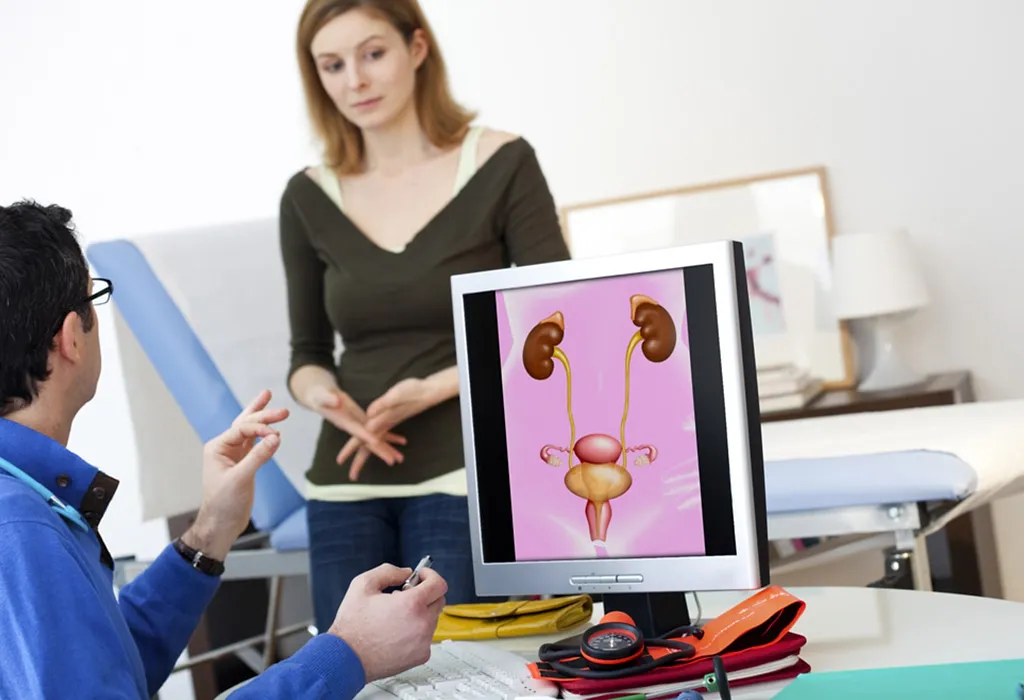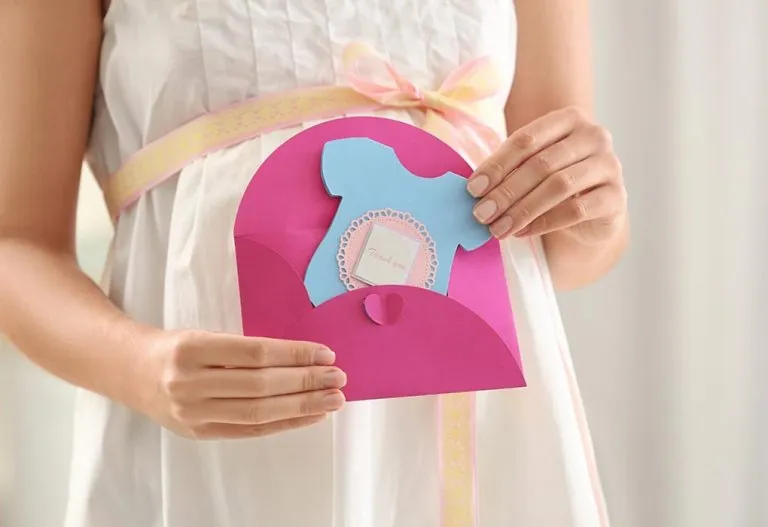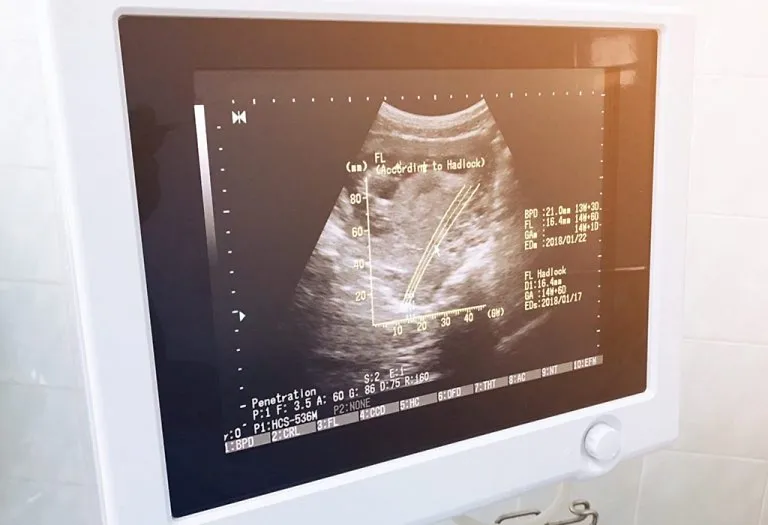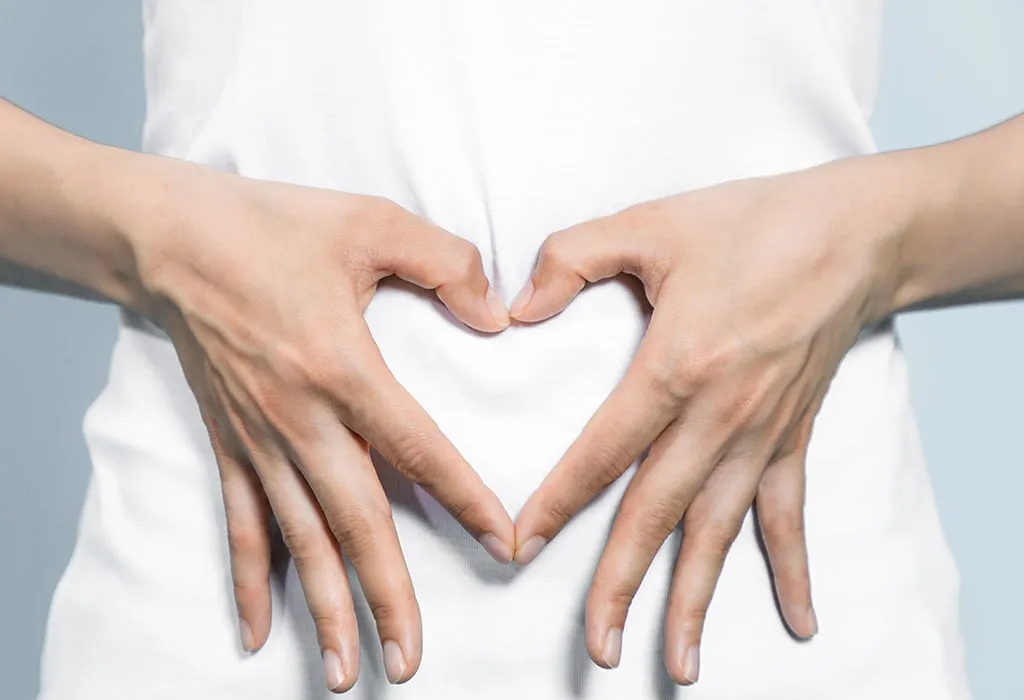Retroverted (Tilted) Uterus – Causes, Symptoms and Treatment

The uterus is an inverted pear-shaped, hollow organ where the foetus grows during pregnancy. This organ nurtures the baby throughout the duration of pregnancy. A healthy uterus is, therefore, a prerequisite for the healthy growth and safe delivery of the baby. Sometimes, physical anomalies may affect the uterus, affecting pregnancy and childbirth. One such anomaly is a retroverted uterus, also called a retro-tilted uterus. A retroverted uterus in pregnancy refers to this condition during gestation. While often harmless, it may cause discomfort in some cases. Understanding this condition is important for expectant mothers to ensure a smooth pregnancy. Read on to learn more about its implications and management.
What Is Retroverted Uterus?
Here’s the retroverted uterus meaning. Most women usually have an anteverted uterus, i.e., when the uterus tilts forward at the cervix or toward the abdomen. Some women may have a tilted or a tipped uterus where it is tipped or tilted backwards inside the pelvis (1). The uterus is called retroverted when in such a condition.
How Common Is It?
It is not uncommon to have a tilted uterus. Around 20% of women have a retroverted uterus. Although the condition itself is not associated with any health disorder, it can have painful symptoms or be an indication of any underlying health disorder.
Difference Between Anteverted Uterus and Retroverted Uterus
An anteverted uterus refers to a uterus that tilts forward at the cervix, facing toward the abdomen. This is the most common uterine position, where the uterus rests above the bladder. In contrast, a retroverted uterus typically tilts backwards, often pressing against the rectum instead of leaning forward (2).
Causes of Retroverted Uterus
There can be several causes which may lead to a retroverted uterus in women. The causes include:
- The problem of a retroverted uterus can be genetic where the woman is born with a tilted uterus.
- During pregnancy, as the uterus enlarges, the ligaments which hold the uterus in place become weak or lose their tension resulting in a tilted pelvis pregnancy and a retroverted uterus. The uterus returns to the normal, forward position after delivery in most cases, but many times it fails to do so.
- Health issues such as endometriosis or pelvic inflammatory disease can also cause a retroverted uterus (3). These health conditions can cause the formation of scar tissues inside the abdomen and move the uterus out of position.
Symptoms of Tilted Uterus When Pregnant
Women may or may not experience symptoms related to the retroverted uterus. However, the major symptoms of a tipped uterus are as follows:
- Dyspareunia – Women with this condition can experience severe pain and discomfort during sexual intercourse (4).
- Dysmenorrhea – Tilted uterus can also cause severe pain during menstruation (before and after pregnancy) (5).
The pain experienced in both the above cases is because of the pressure placed on the rectum and ligaments around the tailbone by the tilted uterus during pregnancy.
Women may also experience general symptoms like:
- Infection in the urinary tract.
- Pain and difficulty in using tampons.
- Lower back pain, especially during intercourse.
- Lack of control over bowel movement and urination. This condition is known as incontinence.
- Although rear, infertility can also be one of its symptoms.
If any of these symptoms persist for a long period of time, you should consult your doctor and get diagnosed for a retroverted uterus.
Risk Factors of a Tilted Uterus During Pregnancy
Difficulty emptying your bladder during the first trimester can increase the risk of a urinary tract infection (UTI), as stagnant urine creates an environment where bacteria can thrive (6). This is one of the potential complications of a tilted uterus. Be mindful of other UTI symptoms, such as pain or a burning sensation during urination, or lower abdominal pressure and discomfort. If you experience these signs, inform your doctor so they can prescribe pregnancy-safe antibiotics for treatment.
Can It Affect Pregnancy?
Generally, the uterus corrects its position between 10th and 12th weeks of pregnancy. This minimizes the risk of pregnancy and labour. Tilted womb and getting pregnant can get complicated if the uterus does not move into the correct position before delivery. Although rare, this can result in a miscarriage. You should let your doctor know about the tilt of the uterus at the very beginning.
Can a Retroverted Uterus Prevent Pregnancy?
Trying to conceive with a tilted uterus should not hinder or prevent pregnancy. A retroverted uterus is linked to infertility only after all other possibilities that can lead to infertility have been ruled out (7). Trouble in getting pregnant due to a tilted uterus is rare.
How Is Diagnosis Done?
A simple pelvic examination or an abdominal ultrasound by your doctor can identify a retroverted uterus. In case you experience any symptoms related to this condition, you should seek advice from your doctor and get tested for the condition.
Treatment
On getting pregnant, the uterus will move forward into the correct position and will not need any treatment. In the case where the uterus does not correct itself, or if the position needs to be corrected before pregnancy, a simple surgery will help reposition it (8). Repositioning of the uterus will provide relief from menstrual pains and pains that are experienced during sexual intercourse due to a tipped position of the uterus.
What Are the Other Ways to Reposition a Tipped Uterus?
Apart from correction by surgery, the uterus can also be repositioned by the following methods (8):
1. Knee Chest
This is an exercise which will help to reposition a retroverted uterus temporarily. This exercise will not be helpful if the changes have occurred after delivery as a result of pelvic infections, fibroid tumours or endometriosis.
2. Pessary
A pessary is a plastic or silicon device which is placed in the vagina in order to reposition the uterus temporarily. A pessary is used as a temporary solution only as prolonged use of the device may lead to vaginal infections.
Exercises for a Tilted Uterus
A tilted uterus, or retroverted uterus, is a common anatomical variation where the uterus tilts backward toward the spine. Certain exercises can help strengthen the pelvic floor and abdominal muscles, potentially alleviating symptoms. Below are a few exercises that may be beneficial:
- Pelvic Tilts: Lie on your back with your knees bent and feet flat on the floor. Tighten your abdominal muscles and gently tilt your pelvis upward, flattening your lower back against the floor. Hold for a few seconds, then release. Repeat 10-15 times.
- Knee-to-Chest Stretch: Lie on your back with your legs extended. Slowly bring one knee toward your chest, holding it with both hands for 20-30 seconds. Switch legs and repeat. Do this 5-10 times per leg.
Changes That May Happen to a Tilted Uterus After Pregnancy
The position of the uterus after delivery depends on various factors such as the weight gain, and the stretching of ligaments. The uterus may or may not settle in an upright position, but the good news is that the position is not going to affect future pregnancies in any way.
Prevention
There is no way to prevent the chances retroverted uterus especially if the tilt is genetic and present by birth. However, since diseases and infections such as endometriosis or pelvic inflammatory disease can also cause tilted uterus, they should be treated at the earliest after discovery.
A retroflexed uterus during pregnancy does not pose a risk to the baby or to the pregnancy itself and in most cases, the uterus corrects itself as the pregnancy progresses. Hence, any surgery to correct the backward uterus in pregnancy may not be necessary.
When to Consult the Doctor
A retroverted uterus is usually a normal anatomical variation and often does not cause any symptoms or complications. However, there are certain situations where consulting a doctor is advisable:
- Persistent Pain: If you experience chronic pelvic pain, pain during intercourse, or discomfort that interferes with daily activities.
- Difficulty Emptying the Bladder: A tilted uterus can sometimes press against the bladder, causing urinary retention or frequent urinary tract infections (UTIs).
- Painful Periods: Severe menstrual cramps or heavy bleeding that worsens over time may indicate an underlying issue.
- Pregnancy Concerns: If you are pregnant and experience back pain, difficulty emptying the bladder, or suspect complications like an incarcerated uterus (where the uterus becomes trapped in the pelvis).
- History of Pelvic Conditions: If you have a history of endometriosis, pelvic inflammatory disease (PID), or pelvic surgery, which may contribute to a retroverted uterus and associated symptoms.
- Difficulty Conceiving: While rare, a retroverted uterus may sometimes be linked to fertility issues, warranting medical evaluation.
Questions to Ask Your Doctor
If you’ve been diagnosed with a retroverted (tilted) uterus or suspect you have one, asking the right questions can help you gain clarity, address concerns, and make informed decisions about your health. Here are some key questions to consider:
- Is my retroverted uterus causing any symptoms or complications?
- Could this condition affect my ability to conceive or carry a pregnancy?
- Are there any specific exercises or lifestyle changes that could help alleviate discomfort?
- What are the potential risks or complications of a retroverted uterus during pregnancy?
- Do I need any additional tests or imaging to rule out underlying conditions like endometriosis or fibroids?
- What treatment options are available if I experience pain or other symptoms?
FAQs
1. Can a retroverted uterus affect the accuracy of pregnancy tests?
No, a retroverted uterus does not impact the accuracy of pregnancy tests. These tests detect the presence of the hormone hCG in urine or blood, which is unrelated to the position of the uterus.
2. Does a retroverted uterus affect the placement of an IUD (intrauterine device)?
While a retroverted uterus can make IUD insertion slightly more challenging, it does not prevent the use of an IUD. A skilled healthcare provider can safely place the device with proper guidance, such as ultrasound assistance.
3. Can a retroverted uterus cause sciatica or nerve-related pain?
In rare cases, a severely retroverted uterus may press on nearby nerves, potentially contributing to sciatica-like pain or discomfort in the lower back and legs. However, this is uncommon and usually requires further investigation to rule out other causes.
This was all about retroverted uterus and pregnancy. Although the retroverted uterus does not impact pregnancy in most cases, it is important to be aware of the condition and consult your doctor about the possible complications it can lead to during pregnancy. A retroverted uterus can be corrected by means of surgery to provide relief from the pain and discomfort associated with it. In cases where the tilted uterus is as a result of any infection or disease, it is important to get the infection treated at the earliest.
References/Resources:
1. Mayo Clinic – Tipped (tilted) uterus
2. Cleveland Clinic – Retroverted Uterus
3. Mount Sinai – Retroversion of the uterus
4. Mayo Clinic – Painful intercourse (dyspareunia)
5. Cleveland Clinic – Dysmenorrhea (Menstrual Cramps)
6. Pregnancy, Birth, and Baby – Urinary tract infections (UTIs) during pregnancy
7. Health University of Utah – I have a tilted uterus. Should I worry?
8. Better Health Channel – Retroverted uterus
Also Read:
Inversion of the Uterus
Small Uterus and Pregnancy
Bicornuate(Heart Shaped) Uterus
Different Types of Uterus Abnormalities?
Was This Article Helpful?
Parenting is a huge responsibility, for you as a caregiver, but also for us as a parenting content platform. We understand that and take our responsibility of creating credible content seriously. FirstCry Parenting articles are written and published only after extensive research using factually sound references to deliver quality content that is accurate, validated by experts, and completely reliable. To understand how we go about creating content that is credible, read our editorial policy here.

























